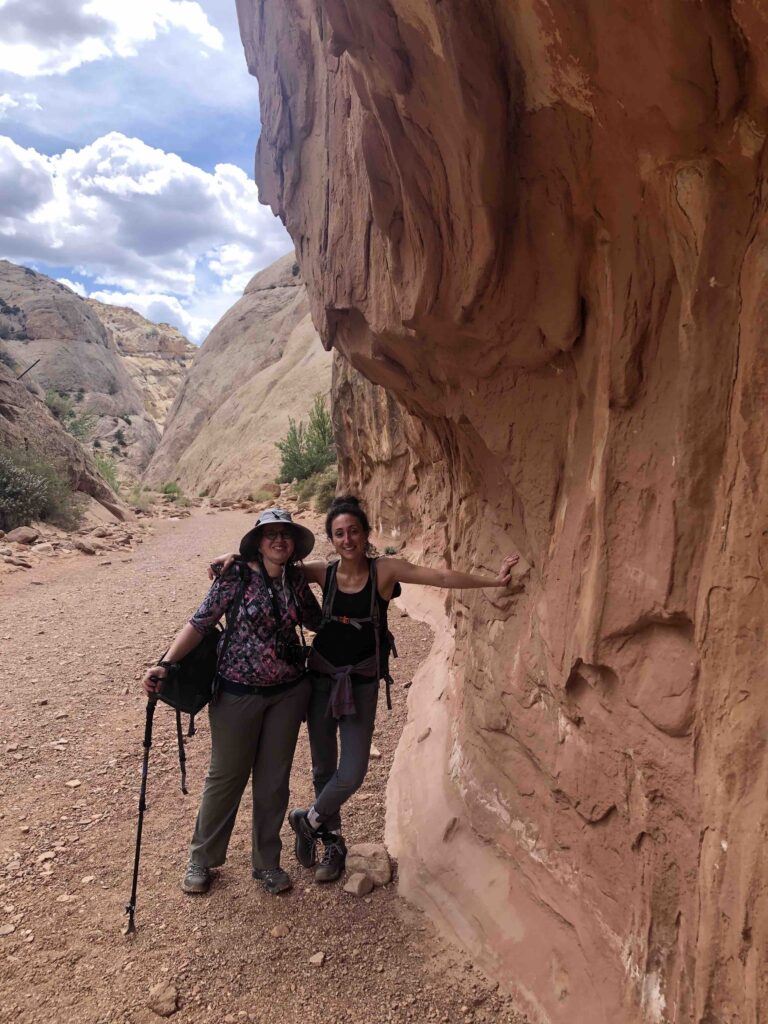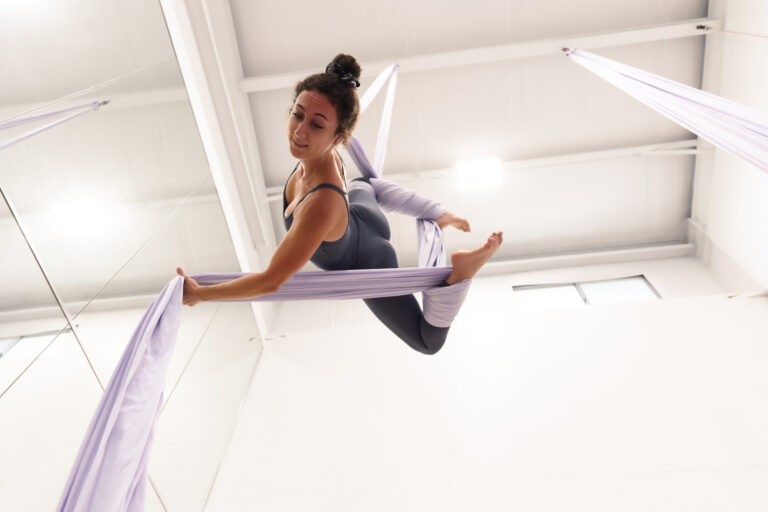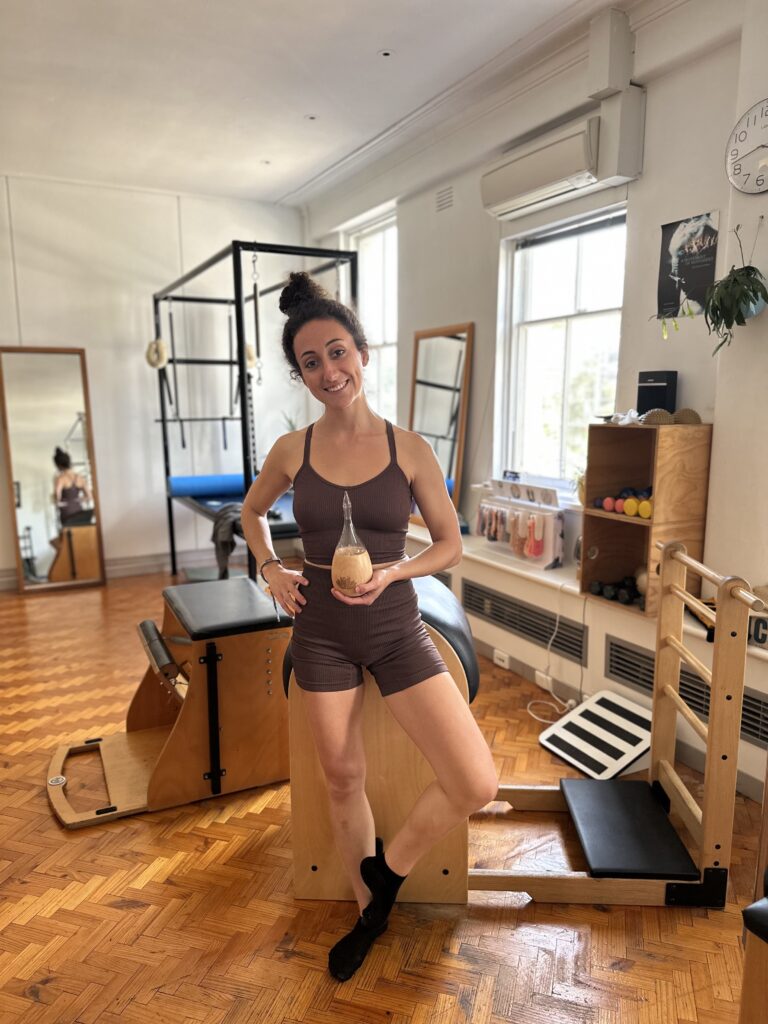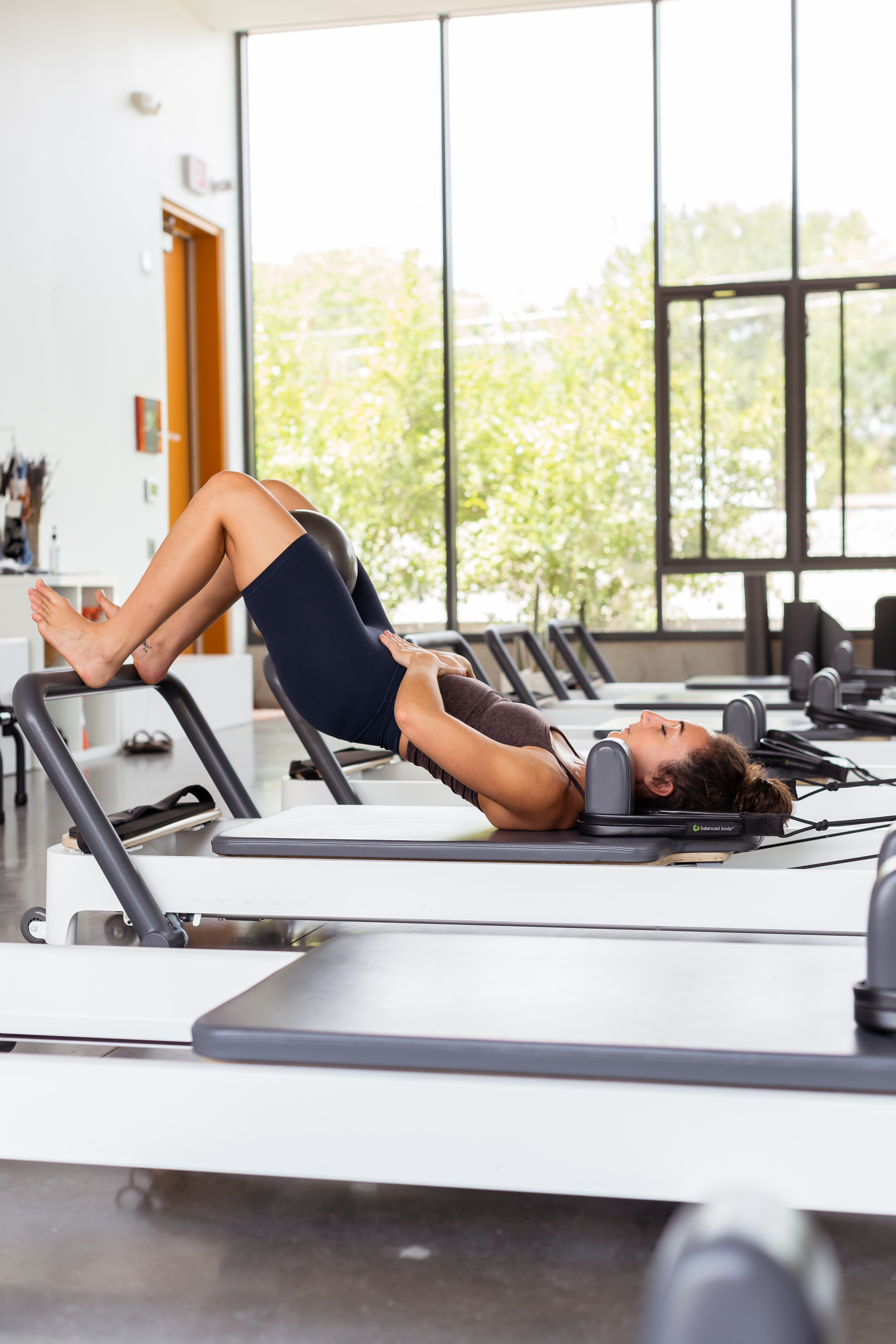Pilates Body Hack: Pilates for Low Back Pain

Low back pain is an extremely complex issue that many people experience at least once, if not several times in one lifetime. This blog speaks to my personal experience and thorough research of my own back injury (in short, a lumbar spine disc herniation), insight I’ve gained over the years as a Pilates instructor, and knowledge I’ve absorbed from specialized physical therapists including my rockstar mom, Sandy Vigh, and my go-to pelvic floor specialist, Dr. Ali Bennet at the Relate Center in Austin, Texas. Knowledge I will share here also comes from insight I have gathered from my certification with clinical Pilates instructors and physiotherapists in London at the Australian Physiotherapist and Pilates Institute, as well as my weekly webinar digest on the Polestar Pilates Hour.
Blog Guide
- Overarching How
- How does Pilates help low back pain?
- What’s the hack: Pilates Exercises Help with Low Back Pain
- Conclusion: Pilates Body Hack: Pilates for Low Back Pain
Overarching How
What pain is associated with low back instability?
Pain associated from instability in your low back is extensive. The pain I have experienced roots from a herniated disc in my lumbar spine (L4/5); therefore, I feel stiffness as a result of prolonged sitting and repetitive flexion (folding forward).
I have also experienced pain during extension (back bends). My physical therapists have explained that, in my body, this is a result of stiffness in my erector spinae (the muscles that align your spine from your skull, all the way down) and general stiffness and guarding in my rib cage and thoracic spine (mid spine). In others, pain with extension and spinal rotation, can be an indicator that your facet joints are stiff and in need of mobility and adjustment that can be provided by a physical therapist or chiropractor.
Research shows that pain and weakness in your pelvic floor is directly tied to low back pain and instability. If you have pain during sex, incontinence, pain or tightness in your inner thighs, or stiffness rooted deeply in your glutes (your piriformis and other external rotators), it’s possible that your body is also experiencing low back instability, due to how deeply these pelvic floor pain points are connected.
Generally speaking, low back instability is also associated with instability in your sacroiliac joint, or SI joint (the bowl like shape that connects both halves of your pelvis). Excessive mobility in this area of your body can contribute to low back pain as well. Often times, from a movement perspective, you can tell if you have excessive mobility in your SI joint by observing the shift of your hips as you walk. If you have a large range of motion in your hips as you walk, it’s possible you might have some instability in your pelvis.
What muscles should you focus on strengthening with low back pain?
If you’re experiencing any of the pain points mentioned above, I want to re-emphasize that you should visit a trusted healthcare practitioner like a physical therapist, or a chiropractor for the best care plan for your body. The following explains muscles that I recommend strengthening as a result of my journey of healing from years of back pain and work as a Pilates instructor.
Inner Core Unit
Your inner core unit is comprised of the following deep tissues and muscles. Prioritizing deep core strength is something that I think everyone could use more of. For those dealing with low back pain and pelvic floor pain simultaneously, tuning into this work will be a game changer for getting out of pain and giving you the key to stabilizing your back and pelvis for life!
- Diaphragm: your respiratory muscle that rests below your heart and lungs
- Transversus Abdominus (TrA)- my PT Assistant, Aunt Sue calls this muscle your abdominal super suit, which I love! It helps me remember that TrA begins at your Xiphoid process (the bone that rests below your sternum), goes all the way down to your pubic bone, and wraps around your back (between your bottom 7-12 ribs).
- Multifidi– the smallest muscles that align on your spinal segments
- Pelvic Floor– this is a complex group of muscles that hammocks in between your thighs. Since your inner thighs connect at your pelvic floor, Pilates techniques are based on strengthening, adduction (squeezing inward) as well.
Outer Hip and Posterior Chain
- Gluteus Medius – your prime muscle for opening your hip joint.
- Gluteus Minimus– works in concert with your glute medius to open your hip and stabilize your pelvis
- Tensor Fasciae Latae (TFL)- a narrow muscle that works with other gluteal muscles to stabilize your hips
- Hamstrings– you have three of these on each leg that Pilates works towards strengthening!
What muscles should you focus on calming down with low back pain?
It’s common to experience stress and tension in the following regions when your low back is unstable and in pain. I have had thousands of back massages and highly recommend this type of body work to combine with your stability work for anyone experiencing low back pain. My go to massage therapist for anyone in the Austin area, is Hezekiah Lasater at Lasater Massage Therapy.
- Erector Spinae– the larger three sets of muscles that align your spinal segments. The Erector Spinae is considered part of your “global core.”
- Quadtratus Lumborum (QL)- the rectangular shaped muscle that inserts at your 12th rib, and your illiac crest (the upper bone of your pelvis). It’s common for this muscle to get knotted and cause pain when your outer hip stabilizers aren’t strong enough. This is because QL turns on during lateral (side) bending.
- Piriformis and other external rotators – Often times when our glutes are released, our pelvic floor is able to relax and engage more appropriately.
- Pelvic Floor- Yes pelvic floor massages are a thing and I am unashamed to share that my work with Dr. Ali Bennet has unlocked tremendous healing in this area! Much of the time this area of your body does require a release before it’s able to appropriately strengthen.
- Hip Flexors and Inner Thighs
How does Pilates help with low back pain?
The foundation of Pilates is rooted in diaphragmatic breath work, and the root of diaphragmatic breath work facilitates strength in your inner core unit. As your ability to consciously strengthen your inner core unit improves, inflamed pain points associated with low back instability, like your QL, and smaller ligaments around your SI joint, and even deeply rooted in your pelvic floor, don’t have to work as hard.
Your ability to consciously engage your deep core will help you execute increasingly challenging movements, which overtime, will significantly improve the stability of your pelvis and low back.
Pilates’ side glute work and lower posterior chain work (the backside of your legs) is also a leader in safely helping those who struggle with low back pain and pelvic instability. Strengthening your glute med, glute min, and TFL informs your body to take load off of your low back pain points by distributing the work to your outer hip instead. Often times, on most people, these muscles are severely underworked. So truly, almost anyone can benefit from some version of lateral glute and hamstring targeting.
In my experience, 20 minutes or more of daily dedication to Pilates breath work, bridging, and side line sequencing has been my movement medicine. It has been one of my top tools in managing my pain.
I can name many instances where I have been inflamed and stiff from sitting, sleeping, traveling, or just overdoing it during my silks practice. By taking just 15-20 minutes to focus on my breath, and my clams in these instances, I have learned how to turn my pain dial down.
What’s the Hack: Pilates Exercises to Alleviate Low Back Pain
Clams and heel drives are my top Pilates picks for strengthening the glute med, glute min, and TFL. Kick backs also help target these muscles while getting into the hamstrings as well.
Bridging, the last exercise, is its own beast. While it is a leading Pilates exercise for stabilizing your pelvis and low back, it hasn’t always been “easy” for me as someone who has struggled with a herniated disc. If you are like me, and also have disc issues, be very gentle with yourself as you try this one out. The positioning needs to be exact in order to avoid allowing your weight to fall in your low back instead of strengthening your hamstrings (which is one of its main goals).
Clams
- Lie on your side with your knees bent and stacked on top of each other.
- Rest your head on your arm and keep your hips stacked (think tail bone back, hips forward)
- Inhale to prepare, and as you exhale, lift your top knee while keeping your feet together. You don’t need to lift your knee much to access your lateral glutes for this one!
- Inhale to lower your knee back down.
- Repeat the movement for the desired number of repetitions (I recommend at least 20), then switch to the other side.
Heel Drives
- Remain in the side-lying position you found during your clam pose.
- The next time you open your knee, keep it lifted, with your heels sealed together.
- Begin to drive (or move) your heel up and down your shin bone, like you are shaving your shin with your heel.
- Repeat 10-12 times, or until you feel a significant burn in your lateral hip.
Kick Backs
- Start by lying on your side with your bottom arm extended straight out for support and your legs stacked on top of each other.
- Engage your core and maintain a straight line from your head to your heels.
- Inhale to prepare, and pull your top knee in towards your chest, about 90 degrees.
- Exhale to press your top leg behind you, just slightly behind your pelvis while keeping your hips stacked.
- Repeat at least 5-10 times, stretch, and repeat on your other side.
Articulated Bridging
- Lie on your back with your knees bent and feet flat on the mat, hip-width apart.
- Inhale to prepare, and as you exhale, peel your spine off the mat, lifting one vertebra at a time until you reach a bridge position.
- Inhale at the top, and as you exhale, slowly lower your spine back down to the mat, articulating each vertebra.
- Repeat for the desired number of repetitions, focusing on maintaining control throughout the movement.
Conclusion: Pilates Body Hack: Pilates for Low Back Pain
I could talk for hours about how much Pilates (and my mom) has helped me combat my low back pain. It is the reason I became a Pilates instructor in the first place, and has been one of the main reasons I have been able to return to my very favorite form of movement, aerial silks.
It’s important to note that much of the time, low back pain can become chronic pain as it shows up again and again, and sometimes doesn’t entirely fade. Pilates is fabulous for those who suffer with different types of chronic pain as well, as it gives you a safe and controlled movement outlet that is designed to stabilize, lengthen and best of all, feel good!

Pilates Body Hack: Pilates for Happy Hips
One of the first things I notice as a Pilates instructor when one of my clients lays down on the reformer for their first exercise is the natural balance of their hips in relation to their legs, low back and deep core. Tight hip flexors, weak glutes, rotated and uneven hip crests, and a tendency…

My Favorite Athletic Wear for Aerial Silks
Finding comfortable and supportive material to move in in the air can be a challenge! This blog takes you through my 5 favorite brands that I wear during my aerial silks practice. In addition to being popular, cute choices, these brands also support eco-friendly manufacturing practices, which I can get behind to support any day!…

Pilates Body Hack: Pilates for Rounded Shoulders
Pilates works to restore balance and equilibrium in our bodies. Unfortunately daily life as a result of our digitally intensive work and social activities commonly brings about unwanted pain, stiffness, and imbalance. This Pilates body hack blog reveals the how behind rounded shoulders by reviewing what weak muscles cause this posture, what pain is commonly…

Pilates is better with essential oils
Pilates is designed to be a full body experience. Our sensory system- smell included- plays a large role in how we create pleasant memories and movement experiences. Thanks to my new product sponsors at Organic Aromas, I have started using their signature essential oil, “Serenity” in my new RainDrop Nebulizer during private and small group…
